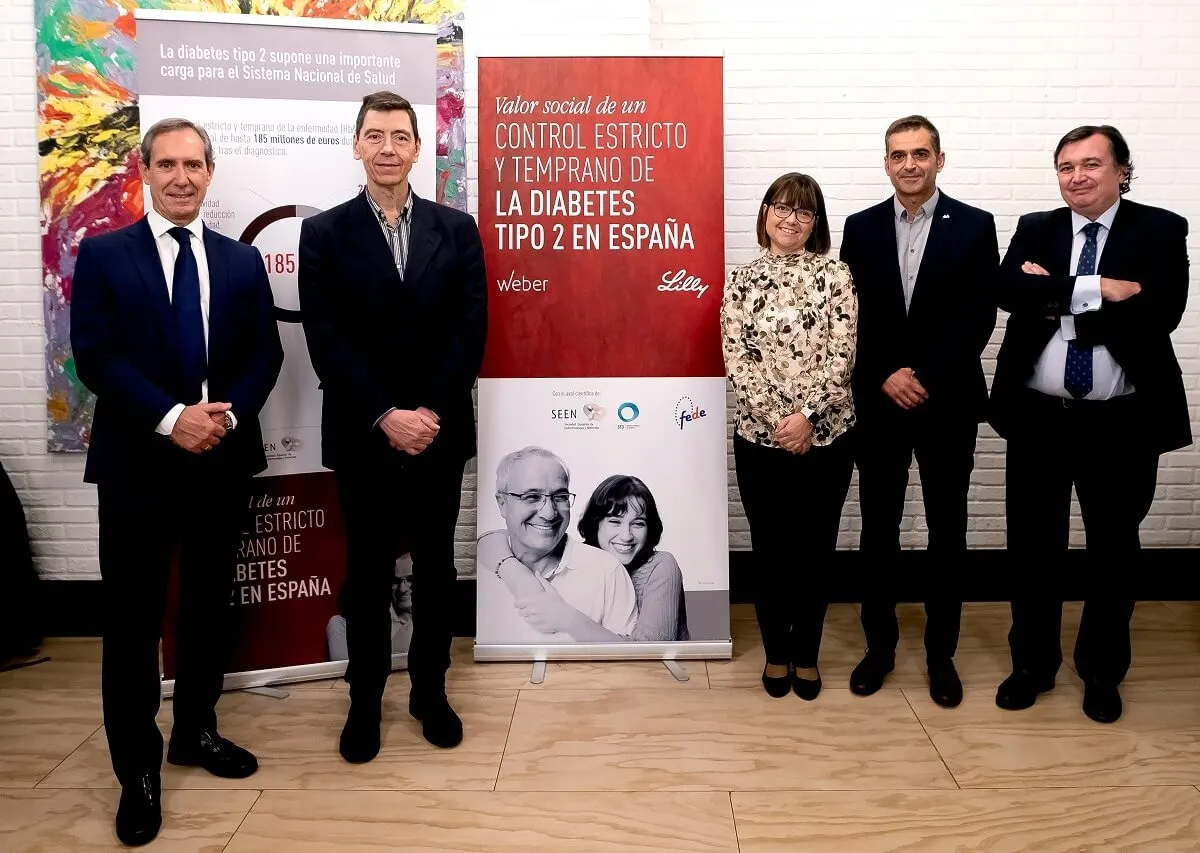This has been revealed by experts who have presented the report 'Social value of strict and early control of type 2 diabetes in Spain', made for Lilly by Weber, and which has the scientific guarantee of the Spanish Society of Endocrinologyand Nutrition (SEEN) and the Spanish Diabetes Society (SED), as well as with the endorsement of the Spanish Diabetes Federation (Fede).
The study ensures that a person with controlled diabetes can mean savings of 2,649 euros during the first five years after diagnosis.In total, 185 million euros of total social value in Spain could be generated, which is equivalent to a reduction of 8.7% of the total cost generated by diabetes.
The objective of this study was to estimate social value;That is, the difference between the economic impact generated by strict control of the disease against non -strict control five years after diagnosis.
The conclusions of the report have been presented by Álvaro Hidalgo, president of the Weber Foundation;Doctors Francisco Javier Escalada, president of the SEEN;Joan Antoni Vallés, clinical pharmacologist of the Catalan Institute of Health, and Juan Francisco Perán, president of Fede.
The meeting has also been attended by Miriam Rubio de Santos, medical director of the Lilly Diabetes Area, who has indicated Lilly's commitment to diabetes for 100 years and added that “with this report we put on top ofThe table objective data on the load that type 2 diabetes supposes for the health system in Spain, as well as the importance of optimal disease control for a better use of health resources, which is an additional benefit to improvement in thequality of life that supposes for patients ”.
Type 2 diabetes generates an important load for the National Health System (SNS).As the report highlights, a person without this pathology consumes € 1,804 each year in direct health resources compared to the 3,110 euros on a person with a person with type 2 diabetes. “A strict control of the disease would generate a positive social value during theFirst five years after the diagnosis of up to 185 million euros.Most of the social value would correspond to saving in hospitalizations (65.7 million), and the improvement of the quality of life (€ 56.2 m), followed by labor productivity due to reduction of, mortality (41 million)and savings due to the decrease in complications (22.2 million), ”explains Álvaro Hidalgo, president of the Weber Foundation.
Regarding the concrete economic impact per patient, the report points out that strict control of type 2 diabetes would generate positive social value during the first five years after the diagnosis of 2,649 euros per person, broken down at € 318 euros due to reduction in the impact of the impact of the impact ofComplications, 940 euros for decreased hospitalizations, 805 euros thanks to an improvement in the quality of life, and 586 euros in labor productivity due to mortality reduction.
Type 2 diabetes, due to its high prevalence and the characteristics of the use of hypoglycemic medicines, is associated with a high pharmaceutical cost.“Several studies have confirmed the clinical benefits of strict and early control of the disease, which in turn involves greater health expense (visits, explorations and pharmacological treatment, among others).However, the report that we present today concludes that this strict and early control is also associated with a lower economic impact, a greater social value for less cost derived from complications, hospitalizations, due to an improvement in the quality of life andfor greater labor productivity, ”says Dr. Joan Antoni Vallés, clinical pharmacologist at the Catalan Institute of Health.
InThis sense, the bibliographic review used in the report shows that, at the time of diagnosis, 74,985 patients in our country show strict control and 69,888 a non -strict control.Maintaining non -strict control implies a greater cost against maintaining strict control: 16,122 euros compared to 13,473 euros in a period of five years.
Complications generated by type 2 diabetes constitute one of the most important aspects and influence on the evolution of the disease.As says Dr. Francisco Javier Escalada, president of the SEEN, “good glycemic control is the starting point, since it can prevent or delay complications of diabetes and morbidity and mortality, and thereby improve the quality of life of thepeople living with this disease. ”
Complications associated with the disease can be acute and/or chronic.“Acute complications group hyperglycemic decompensations (simple, ketoacidosis and hyperglycemic hyperosmolar decompensation) and hypoglycemia.In addition, there are chronic complications, which can be microvascular, such as diabetic retinopathy, diabetic renal disease or diabetic polyneuropathy;and macrovascular such as cardiovascular diseases, brain and peripheral arteriopathy.On horseback between them we could have heart failure/diabetic myocardiopathy, ”says Dr. Escalada.
Reducing hospitalizations due to acute and chronic complications represents the positive economic impact with greater absolute social value: € 65.7 m, which would mean a 18.9% reduction in the total cost generated by complications if controlled diabetes is maintained.


